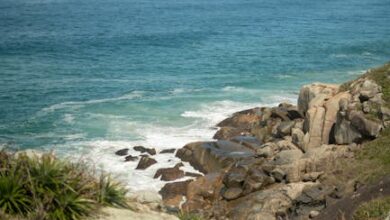Understanding the “Why” and “What” of ChatGPT Apps

A few weeks ago, OpenAI quietly unveiled a feature that might just reshape how we think about interacting with AI and, more importantly, how businesses connect with their users. They introduced “Apps for ChatGPT.” If you’re anything like me, your ears probably perked up when you heard “apps” and “ChatGPT” in the same sentence. But when you realize this means injecting your product or service right into the chat interface, serving a user’s need exactly when they express it, and potentially tapping into a user base of over 800 million? Well, that’s not just interesting; it’s a game-changer.
Imagine a user asking ChatGPT, “Plan a weekend trip to Seattle,” and instead of a generic text response, a travel booking app seamlessly appears within the chat, pre-filled with flight and hotel options. Or perhaps, “Help me manage my budget,” and a personal finance app pops up. This isn’t just theory; it’s the new reality that OpenAI has begun to enable. And for us developers, it means a fresh canvas to create genuinely rich, interactive experiences far beyond the confines of a simple text box.
Understanding the “Why” and “What” of ChatGPT Apps
At its core, a ChatGPT App is a bridge. For the end-user, it’s a leap from constrained textual interfaces to a world of dynamic, feature-rich functionality. Think interactive quizzes, data visualizations, booking forms, or even mini-games – all living within the ChatGPT window.
For businesses, this is nothing short of a golden ticket. It’s a direct channel to an enormous, engaged audience, allowing you to meet customer intent precisely at the moment of need. No more hoping users will leave ChatGPT to find your website; your service comes to them.
What Exactly *Is* a ChatGPT App for a Developer?
From a technical perspective, a ChatGPT app boils down to two main components: an MCP server and a web application running within an iframe. MCP stands for Model Context Protocol, and it’s the secret sauce that allows models like ChatGPT to explore and interact with external services. This server acts as the backend brain, while the web app (your frontend “widget”) provides the visual and interactive muscle.
Crucially, these apps can be triggered in two powerful ways: either by an explicit mention from the user (like typing “@QuizApp”) or, more magically, when the model itself decides that your app is the most effective way to satisfy the user’s prompt. This contextual intelligence is where the real power lies, promising a truly integrated user experience.
The Developer’s Blueprint: Anatomy of a ChatGPT App
Let’s dive into the nuts and bolts of building one. The process, while new, follows a logical flow that will feel familiar to many web developers. I recently walked through creating a simple quiz app, and it perfectly illustrates the key features.
Connecting the Dots: The High-Level Flow
Imagine a user asks, “Make a quiz about Sam Altman.” Here’s what happens behind the scenes:
- You, the developer, register your app within ChatGPT, providing a link to your MCP server. At this point, ChatGPT learns what your app does and when it might be useful.
- A user makes a prompt like our Sam Altman quiz request.
- ChatGPT checks if any registered app can provide a better experience than a text response. It finds your quiz app!
- ChatGPT consults your app’s schema to understand what data it needs to generate the quiz questions.
- ChatGPT then generates the quiz data (the “toolInput”) in the exact format your app expects and sends it over.
- Your app processes this `toolInput`, perhaps adding server-side logic, and produces “toolOutput.” ChatGPT then renders the HTML “resource” provided by your app in the chat window, initializing it with this `toolOutput` data.
- Finally, the user sees your interactive quiz app and can engage with it directly. It’s a beautifully orchestrated dance between AI and your service.
The MCP Server: Your App’s Backend Powerhouse
The MCP server is where your app’s intelligence resides. Using an SDK (like the TypeScript MCP SDK I used), you set up a standard Express app with a dedicated `/mcp` endpoint. This endpoint is the communication hub, receiving requests from ChatGPT and delegating them to your MCP server instance.
The two primary methods you’ll use are `mcpServer.registerTool()` and `mcpServer.registerResource()`.
Crafting the Tool: What Your App *Does*
The `registerTool()` function is fascinating because it’s how you define your app’s capabilities to ChatGPT. When I built the quiz app, I registered a tool called ‘render-quiz’. Crucially, this definition includes:
- A descriptive title and explanation: This tells ChatGPT precisely when and how to use your tool. For my quiz app, I specified it should be used “when the user requests an interactive quiz.”
- `inputSchema`: This is a critical piece, telling ChatGPT the exact JSON format and constraints for the data it needs to provide to your tool (the `toolInput`). For the quiz, this included the `topic`, `difficulty`, and an array of `questions` with `question`, `options`, `correctIndex`, and `explanation` fields. ChatGPT is incredibly adept at generating data that fits this schema.
- `_meta[“openai/outputTemplate”]`: This handy field links your tool to the frontend “resource” that will render the interactive experience.
- An asynchronous function: This is your server-side logic. It receives the `toolInput` from ChatGPT and prepares the `toolOutput` that will be sent to your frontend widget. For the quiz, I simply passed the `toolInput` questions directly as `structuredContent` to the frontend, but here you could perform database lookups, API calls, or complex computations.
Essentially, your tool definition acts as a contract, telling ChatGPT what you can do and what you need to do it. It’s a powerful way to define your app’s intelligence.
From Code to Chat: Bringing Your App to Life
The Frontend Widget: Where Users Interact
Once your MCP server processes the data, it’s time for the user-facing part: the frontend widget. This is defined by your `mcpServer.registerResource()` call. It’s essentially a piece of HTML (often with inline JavaScript and CSS) that ChatGPT renders within an iframe directly in the chat window.
Within this iframe, your JavaScript code gains access to a special `window.openai` global object. This object is your lifeline to the ChatGPT environment, providing vital data and hooks:
- `window.openai.toolOutput`: This is where the `structuredContent` (e.g., your quiz questions) from your MCP tool arrives. Initially, it might be empty, as the widget loads before the server responds.
- `window.openai.widgetState` and `window.openai.setWidgetState()`: These allow you to persist state within your widget. If the user navigates away and comes back, or the page reloads, your app can restore its previous state. In my quiz app, this was used to remember selected answers and the current question index.
- `window.openai.sendFollowUpMessage({prompt: “…”})`: This is a fantastic feature. Your app can literally “send a prompt” to ChatGPT as if the user typed it. After a quiz, you could have a “Review my answers” button that triggers ChatGPT to provide feedback in the main chat.
For a smoother user experience, especially when dealing with the initial `toolOutput` delay, using a framework like React (as demonstrated in the `quizaurus-react` example) with custom hooks like `useToolOutput` can significantly improve things. You can show a “Generating your quiz…” message until the data arrives, making the app feel much more responsive.
Practical Setup: Your First Custom App
Ready to get your hands dirty? You’ll need a paid ChatGPT subscription to enable Developer Mode – a small price for unlocking this potential. The process involves:
- Cloning a sample repo (like the `quizaurus-plain` one).
- Installing Node.js dependencies (`npm install`) and starting your local server (`npm start`).
- Exposing your local server to the internet using a tool like ngrok (`ngrok http 8000`). This gives you a public URL for your MCP server.
- Enabling Developer Mode in ChatGPT settings.
- Registering your app in ChatGPT’s “Apps & Connectors” section, using your ngrok URL + `/mcp` as the MCP Server URL.
- Finally, testing it! I found that sometimes refreshing the app definition in ChatGPT or even re-adding it helps avoid caching issues when making code changes. Then, in a chat, you can explicitly select your app or simply prompt it, “Make an interactive 3-question quiz about [topic].” You’ll likely see a confirmation prompt (a safety feature for unapproved apps), then your interactive widget should appear!
Navigating the Nuances: Advanced Tips and What to Expect
ChatGPT app development is still relatively new, and as with any cutting-edge feature, it’s fair to expect some evolving APIs and minor quirks. Always keep an eye on OpenAI’s official documentation for the latest updates.
App Discovery and Engagement
The effectiveness of your app hinges on its discoverability. Your app’s metadata, particularly the tool description, is paramount. ChatGPT relies on this to determine relevance to a user’s prompt. I’ve even seen ChatGPT ask users if an app was helpful, suggesting a feedback loop for ranking. Once connected, users can trigger your app by mentioning its name, typing `@AppName`, or selecting it from the `+` menu in the chat. OpenAI is also working on “Contextual Suggestions,” where ChatGPT might proactively offer to connect a highly relevant app, much like it does with partners like Zillow or Spotify.
Security, Networking, and More Frontend Magic
Authentication is handled via OAuth 2.1, a robust standard that allows for secure user logins within your app. This is a big topic on its own, and perhaps one for a future deep dive!
Making external network requests from your frontend widget is possible but requires careful configuration of your Content Security Policy (CSP) within the resource definition. You’ll specify `connect_domains` for API calls and `resource_domains` for loading assets. Alternatively, your widget can use `window.openai.callTool()` to invoke other tools on your MCP server, providing a secure backend proxy for external requests.
The `window.openai` object also provides access to various client-side features like the current `theme` (light/dark mode), user `locale`, `maxHeight` for the iframe, and `displayMode` (allowing you to request fullscreen for your app). These features enable you to create truly adaptive and integrated experiences.
Conclusion: Your Gateway to the AI-Powered Future
Building a custom ChatGPT app isn’t just about extending functionality; it’s about pioneering a new paradigm of human-AI interaction. By understanding the Model Context Protocol, defining intuitive tools, and crafting engaging frontend widgets, developers can create applications that seamlessly integrate into the user’s conversational flow, solving problems and providing rich experiences at an unprecedented scale.
The journey into this new frontier is just beginning, and while some aspects are still maturing, the potential is undeniable. This is a chance to put your product directly in front of hundreds of millions of users, providing value at their exact moment of need. So, roll up your sleeves, embrace the cutting edge, and start building. The next generation of AI-powered applications is waiting for you to create it.





